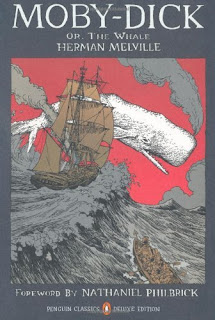In my last post I recommended five novels that won the Pulitzer 70 or more years ago but are now more or less lost and forgotten. After I finish reading one of the Pulitzer winners, I write my views and opinion about the book. This helps me process what I have read and decide what I think of it. I also do this writing in the hope that it might help you to decide whether or not to read the work. The Pulitzer Prize for fiction is given to an American author who preferably writes about the American experience. Given this guideline for the prize, after I have read a Pulitzer winner, I like to reflect on what aspects of American life have been dealt with in the novel, what I may have learned, and how my thinking about the American experience has been influenced by the work.
In this blog I want to share my thinking about Edna Ferber's So Big.

So Big by Edna Ferber, 1924
Won the Pulitzer Prize in 1925, Read in 2006
So Big tells the story of the transformation of American society in the late 19th century from agrarian to industrialized city living and to a more prosperous way of living. In some ways, think So Big has some parallels with The Good Earth by Pearl S. Buck with the story moving from China to Chicago. In So Big a young woman, Selena Peake moves from Chicago to High Prairie in the farm land outside Chicago to be a school teacher, after her father dies and she has to support herself. Selena ends up marrying Pervus DeJong, a Dutch-American farmer, and has a son named Dirk. Selena calls her son “So Big” because when she asks him how big he is, Dirk spreads his arms and says, “so big.” Selena’s husband Pervus is a truck farmer who grows vegetables and hauls them to Chicago to sell them.
The story gets interesting after Pervus dies unexpectedly and Selena has to take over the truck farm. So Big (Dirk) works with his mother and plays by her side in the fields. Selena drives a horse-drawn wagon, leaving the farm early in the morning, and arriving in Chicago in time to claim a spot in the produce market. Dirk rides along with his mother on the weekly trip to market. Selena learns the truck farming business and becomes well-known for her excellent, clean vegetables.
This is where the similarity with The Good Earth comes in. Because Selena is so successful with her farm, she wants what’s best for Dirk and sends him to a good school. By now Dirk is tired of being called So Big and he is soon ready to leave High Prairie to be educated in Chicago. Wang Lung in The Good Earth did something similar with his sons when he became a prosperous farmer. It sounds like a good thing but what do the sons miss out on as they are having a good life handed to them with little effort on their own part? Dirk begins to enjoy big city life and goes on to college. Selena is in favor of this and wants Dirk to be an architect. She wants Dirk to create art through the buildings he will design. However, Dirk goes off to World War I and comes back having lost his interest in architecture and art. He found that he cannot earn enough money as an architect, so he went into banking. Dirk made good money as a banker selling bonds and was able to support his expensive lifestyle, trying to keep up with the wealthy friends he has made in Chicago. Meanwhile, Selena keeps on farming. She tries to get Dirk to see what is missing in his life but he has too many other things to attend to.
So Big gets me thinking about what has happened countless times as sons of successful parents fail to appreciate what those who went before them had to work for in order to be successful. Wang Lung’s sons enjoy the benefits of his hard work and then wait for him to die so they can divide up the property and sell it. It isn’t clear at the end of So Big what Dirk will do with what Selena has worked for. However, Selena has a sense of satisfaction and accomplishment with what she has done with her life given her difficult time of making a living when her husband died and left her with a small son. Where Selena devoted her life to building something, an excellent truck farm, Dirk seemed to want the good life and use wealth for pleasure. It seems like it takes very wise and tough parents to keep from spoiling or harming their children by the fruits of their own hard work and success.



